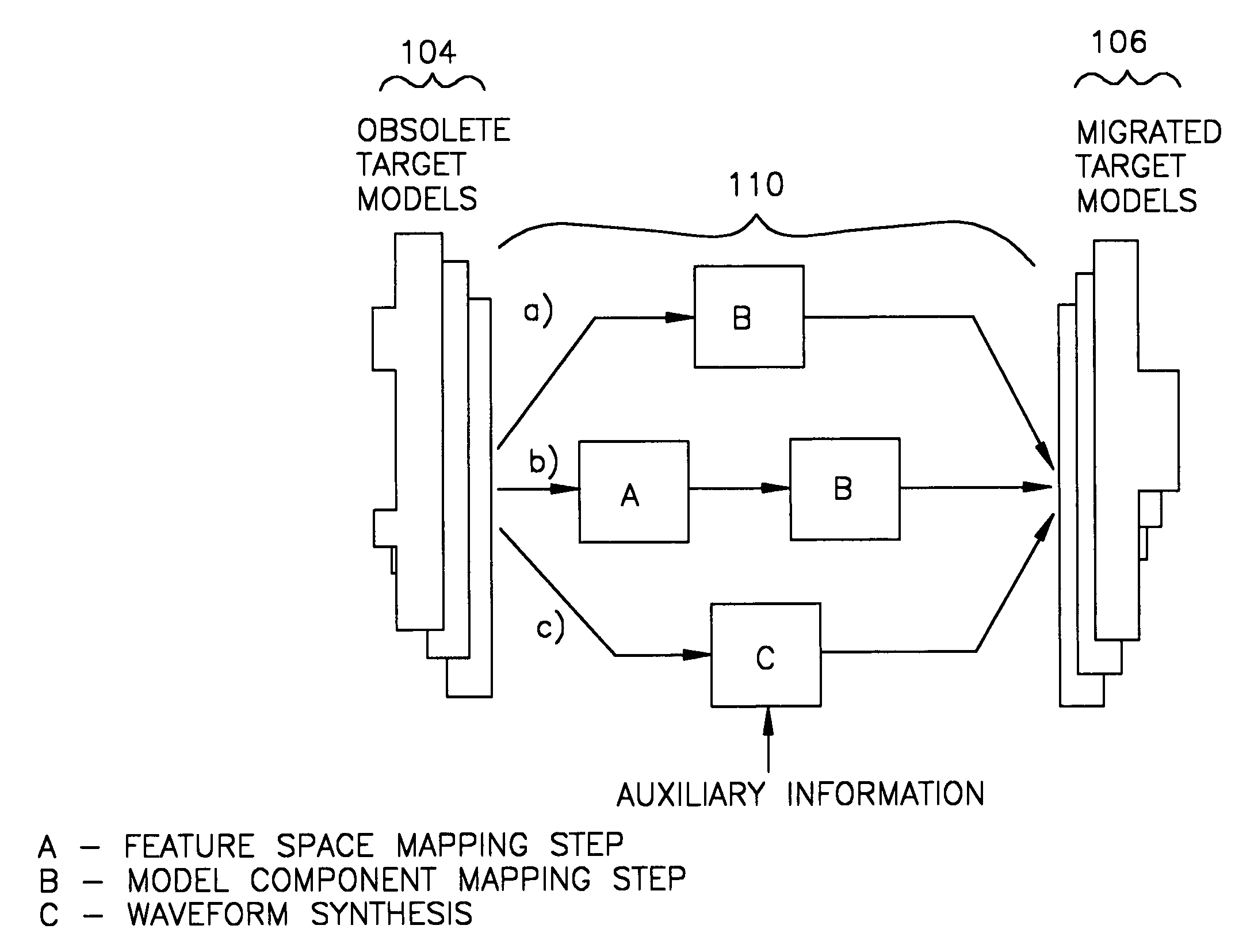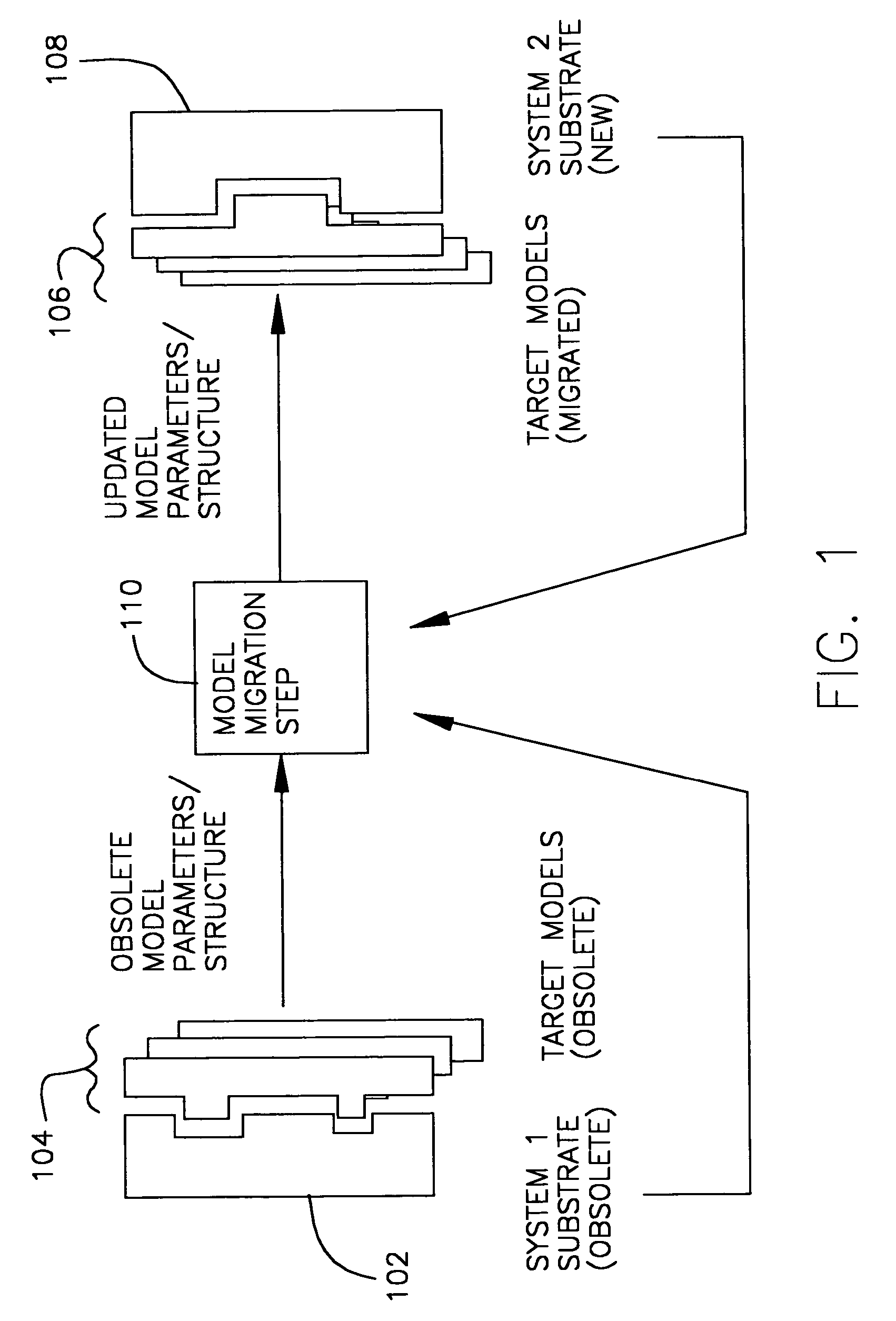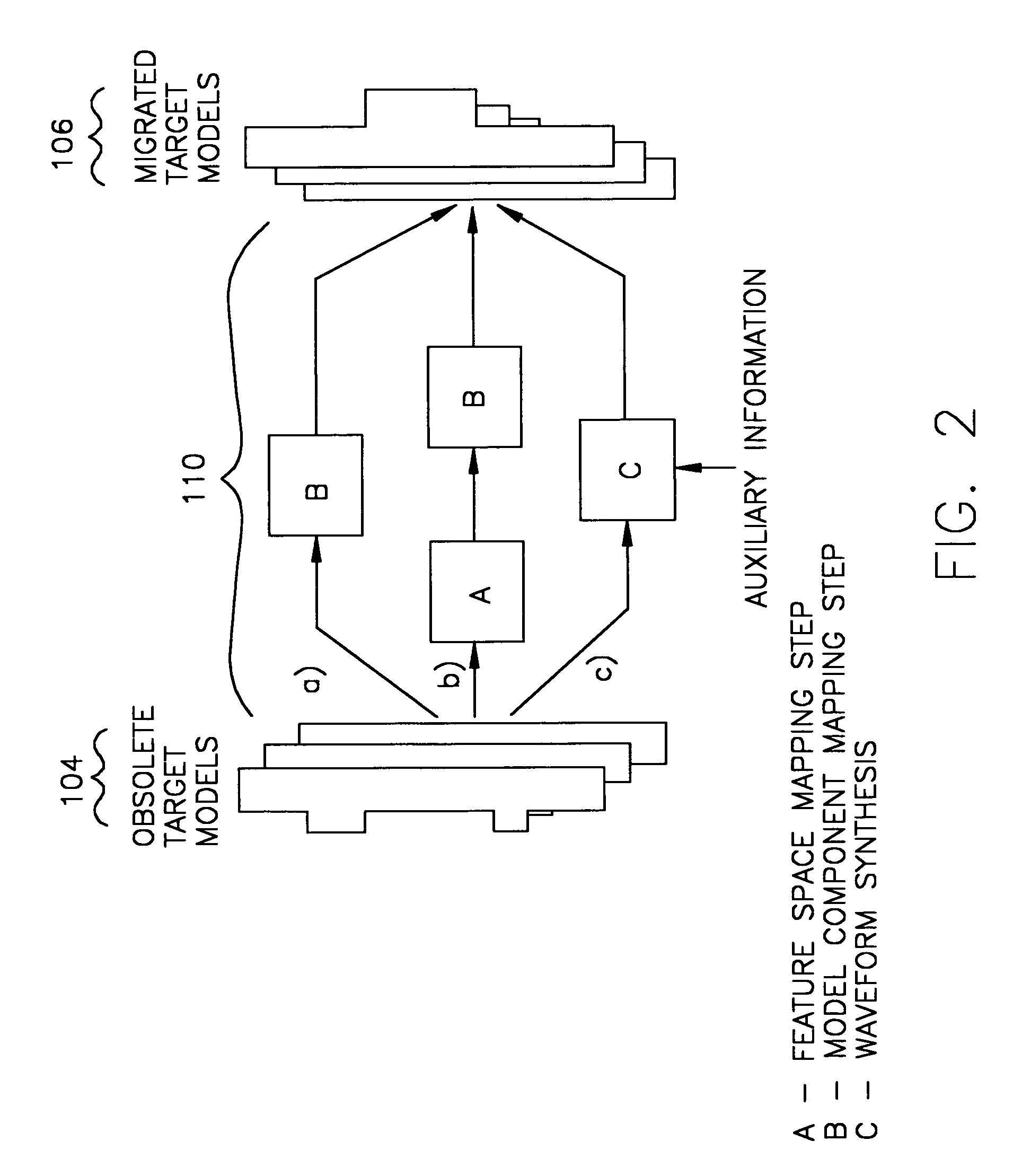Methods and apparatus for statistical biometric model migration
a biometric model and statistical technology, applied in the field of methods and apparatus for statistical biometric model migration, can solve the problems of increasing complexity, new problems and decisions in front of infrastructure providers, obsolete existing accounts, etc., and achieve the effect of minimising the compromise of accuracy
- Summary
- Abstract
- Description
- Claims
- Application Information
AI Technical Summary
Benefits of technology
Problems solved by technology
Method used
Image
Examples
Embodiment Construction
[0013]Herebelow, numerals in brackets—[ ]—are keyed to the list of references found at the end of this section.
[0014]As an example, addressed herein is the task of speaker verification and user models having a GMM structure with mean parameters adapted via the Maximum A—Posteriori (MAP) method from a Universal Background Model (UBM) [4]. There is broadly contemplated herein a statistical method to migrate the user mean parameters from an obsolete model, M0 that were adapted from an obsolete substrate, W0, of size N0 Gaussians to a new user model M, consistent with a new substrate, W1, of size N1. It is assumed that both substrate UBMs are trained in a feature space identical up to a linear transform, but were composed from different data sets, and, in general, N0≠N1. Possibilities of overcoming the feature space assumption are outlined herebelow.
[0015]FIGS. 1 and 2 schematically illustrate the basics of a migration method in accordance with at least one preferred embodiment of the p...
PUM
 Login to View More
Login to View More Abstract
Description
Claims
Application Information
 Login to View More
Login to View More - R&D
- Intellectual Property
- Life Sciences
- Materials
- Tech Scout
- Unparalleled Data Quality
- Higher Quality Content
- 60% Fewer Hallucinations
Browse by: Latest US Patents, China's latest patents, Technical Efficacy Thesaurus, Application Domain, Technology Topic, Popular Technical Reports.
© 2025 PatSnap. All rights reserved.Legal|Privacy policy|Modern Slavery Act Transparency Statement|Sitemap|About US| Contact US: help@patsnap.com



